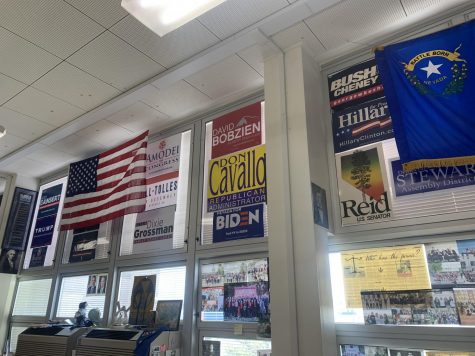Steamboat trail promotes community relationships
April 19, 2021
Constructed around a decade after the founding of Reno in 1868, the Steamboat Ditch and trail are staple historical pieces to the City of Reno. The ditch is an irrigation canal along which hundreds of Reno citizens’ houses and property. In late 2020, a plan was announced to replace the place and the ditch with a covered pipeline. The reasoning for this to avoid flooding and overflow along the banks.
This plan sparked outrage among citizens of Reno, many taking to social media to advocate for the preservation of the path and ditch. Stands and tables dotted the path with information flyers about how the proposed plan would ruin the native habitat for plant and animal life. They also say it would take away a well-used walking path for Reno citizens.
“I think it [the pipeline] would ruin an awesome piece of historical land,” Freshman Cole Lemons said. “There are other opportunities for piping and water routing but this one is irreplicable.”
Like Lemons, Junior Grace Cotton and Freshman Ashely Cotton live near a trailhead of the Steamboat ditch. Both use the trail frequently.
“The trail is something that almost everyone who lives near it uses,” Ashley Cotton said. “It allows people to walk with family and friends, and get out more. If the ditch trail was completely removed it would take something out of a lot of people’s lives.”
Grace Cotton also notes how everyone in the neighborhood frequents the trail. However, she also acknowledges the possible necessity of piping the trail to prevent future damages.
“I understand the need to implement certain infrastructure for the betterment of technology and comfort of living,” Cotton said. “If there is a more expensive option that is less intrusive I think it should be taken to preserve the area’s natural beauty and wildlife.”
Due to the flood of community complaints, the project has been put on hold, while engineers and city planners go back to the drawing board. Jenny Brekhus, a ward 1 city council member, thinks that there wasn’t enough planning into the orignal project.
“There is a need for a project,” Brekhus said. “The problem didn’t go away, but there could be a more minimally intrusive solution, and that’s what we are working on.”




